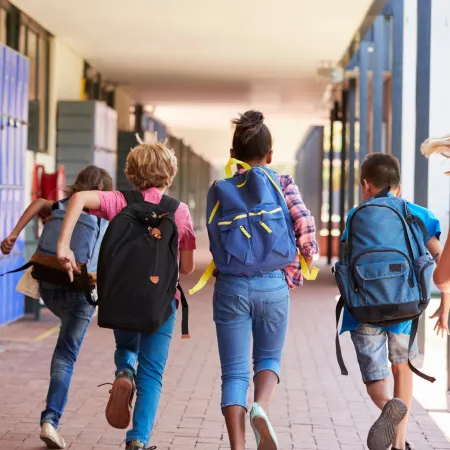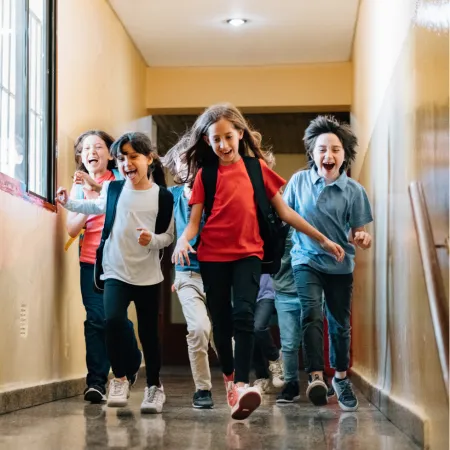Protecting Schools is Our Purpose!
Active Shooter Preparedness: Strengthening School Safety Assessments

FSDAVCFEBFEVSDDVFSD

FSDAVCFEBFEVSDDVFSD

FSDAVCFEBFEVSDDVFSD
Blog Category
Why Active-Shooter Risk Demands Focused Assessments

A rise in K–12 active-shooter incidents has prompted school leaders to reevaluate how they assess campus safety. Traditional methods, while helpful, often miss the urgent realities of today’s threats. Seconds lost to confusion or delay can mean the difference between safety and tragedy. Schools must move beyond surface-level protocols and commit to deeper evaluations of vulnerability.
Studies confirm that faster response times save lives. Yet many campuses still depend on outdated systems—slow alerts, unsecured doors, or poorly rehearsed drills. These issues delay action and increase harm during emergencies. A thorough safety assessment identifies weak points before crisis strikes.
Reviewing access, communication tools, and routine procedures turns uncertainty into action. Meeting legal mandates matters, but restoring parent trust and creating a culture of preparedness is the deeper goal. Planning prevents panic and helps build long-term protection.

Critical Assessment Areas for Shooter Readiness
Safety assessments must focus on five key areas directly tied to active-shooter readiness. The first is access control. Schools should evaluate how well they monitor building entry, whether doors automatically lock, and how effectively visitors are vetted. Unsecured or propped-open doors remain one of the most common failure points during violent events.
The second area is classroom hardening. Even basic improvements—such as installing door barricade devices, applying shatter-resistant film to windows, or reinforcing hardware—can delay a threat and give staff more time to act. Third, every school must assess its communication systems. Clear and rapid alerts reduce confusion. Mass-notification platforms, functioning intercoms, two-way radios, and silent panic buttons all contribute to faster responses.
The fourth pillar is preparedness. Safety reviews should examine who takes part in drills, how consistently they’re conducted, and whether staff and students understand what to do. Vague or inconsistent procedures reduce their effectiveness. The fifth area is first-responder coordination. Schools should confirm their floor plans are available to emergency services and that dispatch systems support real-time alerts. When these five areas are scored during a safety assessment, administrators gain a clearer view of their current readiness—and know exactly where to focus time and funding.
Layering Technology for Faster Alerts and Actions

Technology gives school staff critical speed in emergencies. Panic-alert badges let teachers bypass front offices and connect instantly with law enforcement. These discreet tools eliminate delays and enable silent calls for help the moment danger arises.
Gunshot-detection sensors and AI-enabled school security cameras provide immediate threat recognition. These systems can identify the sound or sight of a weapon and trigger real-time alerts. Geofenced mass-notification apps add another layer, allowing schools to notify only affected zones—reducing panic and improving clarity during response.
Districts evaluating these tools must focus on compliance and connectivity. FERPA-compliant vendors should offer seamless communication with 911 dispatch and local emergency responders. Schools should also test each system’s reliability and false-alarm rates. When paired with training, these technologies dramatically cut response times and improve outcomes when seconds matter most.
Technology gives school staff critical speed in emergencies. Panic-alert badges let teachers bypass front offices and connect instantly with law enforcement. These discreet tools eliminate delays and enable silent calls for help the moment danger arises.
Gunshot-detection sensors and AI-enabled school security cameras provide immediate threat recognition. These systems can identify the sound or sight of a weapon and trigger real-time alerts. Geofenced mass-notification apps add another layer, allowing schools to notify only affected zones—reducing panic and improving clarity during response.
Districts evaluating these tools must focus on compliance and connectivity. FERPA-compliant vendors should offer seamless communication with 911 dispatch and local emergency responders. Schools should also test each system’s reliability and false-alarm rates. When paired with training, these technologies dramatically cut response times and improve outcomes when seconds matter most.

A strong school safety strategy includes piloting alert systems with local law enforcement. Running drills with officers on site helps verify whether alerts reach the right people, fast. These real-world tests reveal routing issues, training gaps, or communication breakdowns that might otherwise go unnoticed. They also build trust between districts and responders, ensuring smoother coordination in an actual emergency.
Funding is often available through federal programs like STOP School Violence and the COPS SVPP grant. These resources can offset the initial costs of implementing new alert technologies. Districts should document key performance metrics during pilot phases—response times, accuracy of alerts, and the number of false positives. These results can strengthen future funding requests and demonstrate due diligence to school boards, parents, and the wider community. By combining practical field testing with measurable outcomes, administrators create a more defensible and effective active-shooter response plan for their campus.
Designing Drills That Teach Without Traumatizing
Active-shooter drills must be informative without instilling fear. The first step is clear, age-appropriate communication. Students and staff should be told what the drill is, why it matters, and how to participate safely. Avoid using audio clips of gunfire or chaotic scenarios, especially in elementary settings. Instead, explain expectations calmly and use non-threatening cues. When staff clearly state the purpose and procedures beforehand, students are more likely to respond appropriately without confusion or distress.
Replace intense reenactments with scenario-based roleplay. For example, walk students through steps like locking doors, moving out of sight, and staying quiet. This method teaches vital safety behaviors while protecting mental and emotional well-being. After each drill, hold a guided debrief session. Give students and staff a chance to ask questions, express any concerns, and reinforce what went well. This feedback loop builds both skill and confidence over time.
During a school safety assessment, leaders should evaluate how clearly drills are announced, who participates, and how efficiently actions are carried out. Track time between the announcement and lockdown completion. Use national guidelines like ALERRT or ALICE as a framework, but customize for your school’s age groups, building layout, and existing procedures to ensure relevance and success.
Empowering Behavioral Threat-Assessment Teams
Behavioral threat-assessment teams are critical to preventing violence before it happens. A well-rounded team includes administrators, school resource officers, counselors, psychologists, and special education professionals. Together, they bring diverse perspectives to identify and address concerning behavior early.
Teams should meet regularly to review anonymous tips, monitor behavioral patterns, and assess any signs that suggest a student may be moving toward violence. Safety assessments must include checklist items that measure training frequency, documentation quality, and the availability of follow-up services like counseling or academic support.
Proactive intervention makes a measurable difference. With a trusted process in place, staff can act with clarity rather than hesitation. Threats are best managed through shared responsibility and structured collaboration. When students know adults are paying attention and ready to help, the entire campus becomes a safer and more supportive place to learn.

Cross-training with FBI units or state fusion centers equips threat-assessment teams with updated insights into behavioral warning signs. These sessions offer case-based learning and give school teams practical tools for recognizing pre-incident indicators. Regular exposure to current threat trends helps schools respond early and appropriately. It also creates stronger links between campuses and outside agencies, ensuring quicker intervention when a case needs escalation.
Still, privacy remains a top concern. Teams must share only what’s necessary—balancing confidentiality with safety. Using secure platforms allows for quick updates while protecting sensitive data. After a student is flagged and supported, schools must develop reentry plans that include counseling, academic help, and clear staff communication. Teachers should know what to expect and how to support the student. Reentry is more than returning to class—it’s rebuilding trust. With consistent follow-up and coordination, schools can reduce future risks while helping students stay on track socially and academically.
Maintaining Preparedness Through Continuous Improvement
Active-shooter preparedness isn’t a one-time fix—it’s a cycle of constant adjustment. Schools should begin with quarterly mini-assessments. These shorter reviews track progress, identify overlooked gaps, and verify whether earlier fixes remain effective. A cloud-based dashboard can centralize this data, making it easier to log new risks, completed repairs, and key updates following drills or actual incidents. This real-time documentation supports transparency and continuity as leadership or staff change.
Emergency operations plans should never remain static. After each drill, administrators should collect honest feedback from teachers, students, and first responders. What went smoothly? What slowed the response? Adjustments made quickly after practice ensure better outcomes during real events. Even minor notes—like confusing language in a classroom poster or a locked gate blocking access—can have major implications during an emergency.
Ongoing staff development and community communication round out the plan. Schools should offer yearly safety training refreshers that reflect new tools, policies, and tactics. These sessions must include substitutes, volunteers, and transportation staff—not just teachers. Town halls help inform families and build trust, giving parents a chance to voice concerns and hear about campus efforts. Consistent communication and preparation signal confidence, not fear, and strengthen school-wide readiness.
Have Questions About What We Offer?
To learn more about our services, contact us today!
Have Questions About What We Offer?
Contact us to learn more about our services
Quick Links
Hours of Operation
Mon - Fri | 9:00 AM - 5:00 PM
Sat - Sun | Closed

©2025 American Priority Project | All Rights Reserved | Privacy Policy

